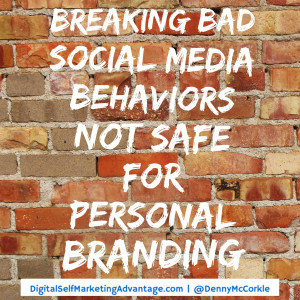In Ernest Hemingway’s The Sun Also Rises, Mike says his bankruptcy occurred two ways: Gradually, then suddenly.
The untenable current situation facing small business entrepreneurs due to the 2020 COVID-19 shutdowns is no different. Everything depends on how their individual states react, plan and illustrate their importance moving forward as soon as possible.
I am not advocating for re-opening any state before the science tells us to. However, it is disingenuous to promote a plan of “stay home to flatten the curve to prevent hospitals from being overwhelmed” but then offer zero plan on how to return to normal once the shutdown is over. And keep in mind, even if science tells us to re-open or not, it will be an elected politician, along with their bureaucracy, making that ultimate decision. Oklahoma and Georgia would be perfect examples of ignoring the science based on bureaucratic decisions.
With nearly one-sixth of the entire U.S. population filing for unemployment, this environment is already becoming suspect for mom and pop entities, or even mid-level operations with multiple locations, to survive. If you’ve always enjoyed the uniqueness of a non-franchise burger stand or entertainment facility, the future might not be your cup of tea.
No Plan Yields Negative Results
This is partially due to a lack of planning transparency by our government officials. If science suggests that, post COVID-19 shutdown, social distancing cannot be achieved for establishments such as coffee stands, pizza parlors or bars to exist in any state for the next 3 to 6 to 18 months, then that needs to be stated immediately by each state’s governor. This is for entrepreneur’s benefit, who has risked their capital, invested in the state itself through licensing, taxes and job creation, who now sits in limbo under the auspices of “when things go back to normal” without any clue as to when normal might be. This is both unfair and cruel by the folks who typically provide underwriting for every local community fundraiser, but not surprising because small business is treated by bureaucracies like the last dog at the bowl, despite how much taxation small business generates for state budgets.
The longer that each COVID-19 shutdown keeps going, without any clarity, the more it feels like mission creep, where a gradual shift of objectives results in an unplanned long-term commitment. In my home state of Washington, my Governor has unconstitutionally bound his 7.5 million citizens to a pact with Oregon’s 4.2 million citizens and California’s 39.51 million citizens, regarding when to re-open. Despite sharing a border with Idaho’s 1.8 million citizens, my Governor feels that California, who does not share our border, offers a greater political alignment based on party affiliation not science.
None of these pacts have provided small business owners with the clarity required on when a state might be individual ready to re-open. Nor are they based on science. None of these three western governors have provided a phased road map of when, and under what conditions, certain small business industries can exist, based on the science. None of these governors have pushed for a reduction in taxation, regulation or fees in reaction to the COVID-19 shutdown, in order to keep small businesses thriving when they can legally return to operate.
Personally, I believe that this is purposeful. Several of these pact governors specifically view small business as a taxation piggy bank, and that the last thing that they seek is a commitment not to raise future business and occupation taxes, along with licensing fees, which may reduce their fiefdom.
It is noticeable that while even publicly traded company C.E.O.s have forgone their salaries and had to lay off thousands of workers to retain solvency, there haven’t been massive furloughs within the public sector. Despite the majority of elected in each state advocating that the shutdown may be indefinite. Promoting telework, while retaining the state bureaucracy against tax receipts dropping off of the state budget cliffs, would suggest bureaucratic reductions were in order (May 05, 2020).
Neither has any of these governors called on their insurance commissioners to push commercial insurers to pay out small business entrepreneurs on loss of income claims, which would help stabilize them further.
The majority of the answer has been to rely Federally on SBA loans through CARES ACT, CARES ACT II or Payroll Protection Plan, which has short-changed actual mom and pop businesses in favor of giving massive payouts to Ruth’s Chris Steakhouse, the airline industry, the Kennedy Center, and Harvard, the $ 40 billion hedge fund masking as a university.
Zealotry Abounds
It is telling that the same political zealots who feign outraged over vague, rambling, incoherent, lack of planning and transparency lacking press conferences by the occupant of 1600 Pennsylvania Avenue over the last three and half years are somehow welcoming of the same babble by state governors who reflect fit their party’s affiliation and ideology. Transparency and clarity in governance doesn’t stop simply because groups want to play team sports. Small business entrepreneurs require answers to whether they keep funding their enterprise in bureaucratic limbo. Waiving off criticism by stating that, if they individually need money, they can go through unemployment or get an essential worker hourly job, is both suspect and disingenuous in terms of providing an answer.
Small business entrepreneurs have massive overhead considerations that other citizens do not. Especially the mom and pop level, who are islands of debt accumulation in these negative cash flow environments. They need to know whether it is smarter to liquidate what they have now, if their industry won’t be able to function for the next 6 to 18 months within a state’s COVID-19 social distancing guidelines. There is such uncertainty of each state shutdown order, which seems to be extended every two weeks, whether that state has truly flattened the curve or has borders with a state that has not flattened the curve at all.
Unlike national franchises, which have teams of lawyers to get them out of commercial lease contracts, small business entrepreneurs may be forced into personal bankruptcies, because they had to personally sign for a lease. Keep in mind, they cannot get their insurers to pay out currently, because denials of claims exist around the idea that these shutdowns are virus-related, not government authority-related.
Without having the clarity to know whether it is time to liquidate, the more definite these mom and pops stay closed, never coming back into the system when they are finally allowed to legally operate based on social distancing guidelines and approval from each state’s governor on which industries are approved under the shutdown order.
Most small business entrepreneurs may end up resembling the paranoid mindset of Ernest Hemingway’s final years: Worrying about finances and safety.
For Hemingway, it was a gradual, then sudden, mental decline, before making the ultimate self-inflected final decision. The longer that the elected wait on showcasing empathy toward small businesses, along with a lack of a detailed plan of what they are willing to do to stabilize entrepreneurs through reduction of taxation, regulation and fees once the COVID-19 shutdown order for their industry segment is lifted, the more likely that these mom and pop businesses that you love will commit Hemingway’s final act, becoming memories you cherish and wish still existed.
Business & Finance Articles on Business 2 Community
(20)





